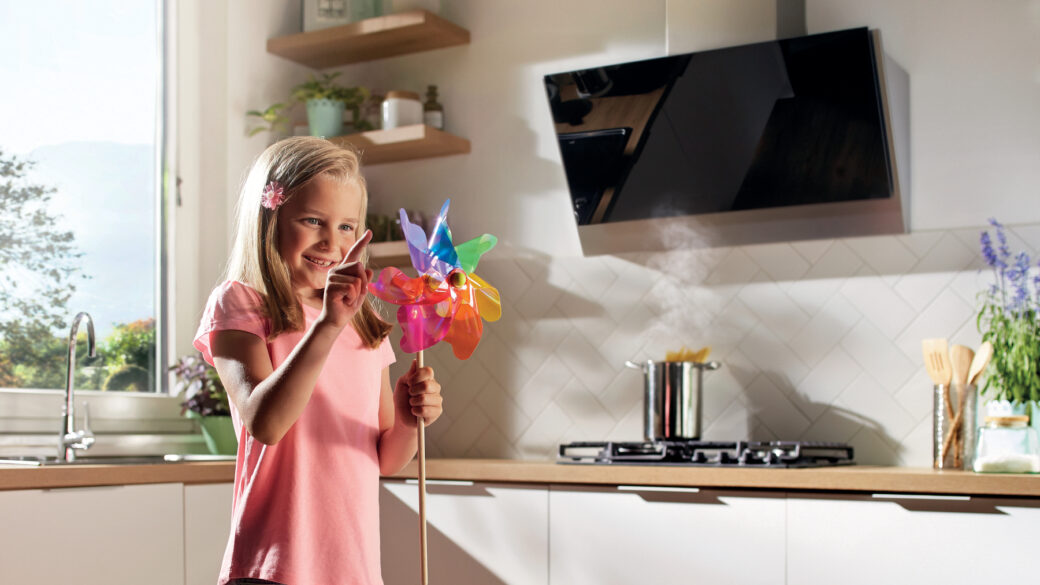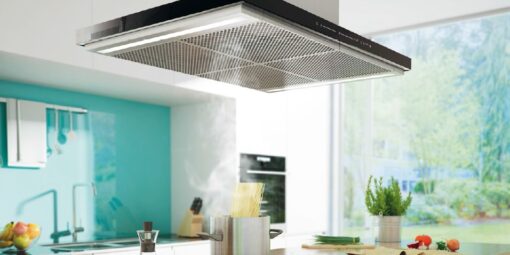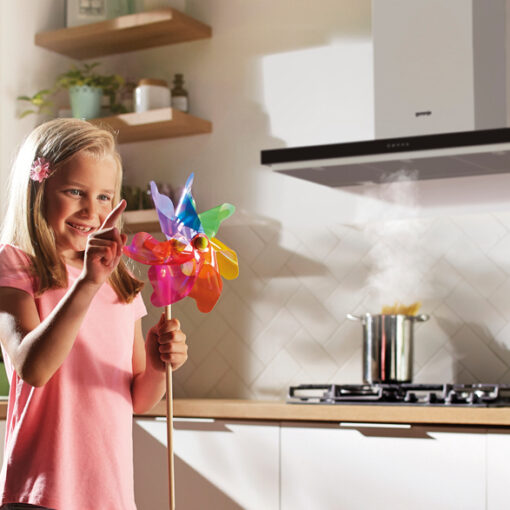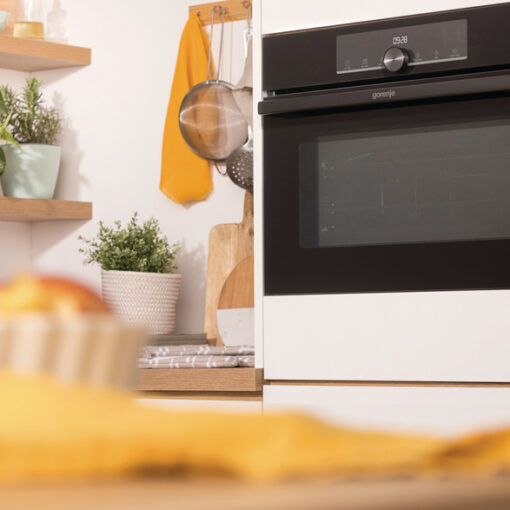5 steps to choosing the perfect hood

1. Which model to choose?
Kitchen hoods come in a variety of different designs, materials and types. Depending on the layout and style of your kitchen, cabinets above your countertops, type of cooking hob and your preference, you can choose between several models.
Wall-mounted hoods (1) are simply attached to the wall and come in a variety of sizes, styles and finishes to suit almost every kitchen. The vertical models are practical for taller people and offer many design options.
Island hoods (2) are suspended from the ceiling directly over a kitchen island and are the best way to extract vapour and odours when you have a cooktop on an island.
Ceiling-mounted hoods (3) are the most elegant solutions for modern kitchens without wall cabinets. For best results and almost completely silent operation, these hoods should have the motor installed outside the kitchen (suitable for house owners).
Telescopic hoods (4) take up the least space as they retract into or under a kitchen cabinet. This simple form of kitchen hood is installed directly over the cooking area and usually leaves some space for a smaller cabinet. Before activation, the hood is pulled out; after use, it is simply closed, or retracted back to the starting position.
Built-in hoods (5) come in different varieties. You can actually “hide” them and thus streamline your kitchen. This could be either in a kitchen cabinet, in the ceiling, or in the countertop, which in turn allows placing the hob in front of a kitchen window.

2. What capacity do you need?
What capacity should a new cooker hood have? This depends largely on the size of the kitchen. A good rule of thumb is that the hood should be able to replace all the air in the room 10 to 20 times per hour. For instance, if a kitchen measures 4 x 4 m with a ceiling height of 2.5 m, the cooker hood should evacuate approximately 400–800 m3 of air per hour.
There will always be some loss of pressure when installing a hood. That is why it is important to observe the following rules:
- Always observe the hood’s recommended duct diameter (O); the diameter is specified on the duct.
- Where possible, use smooth ducts to minimise air resistance.
- Try to make the installation as short as possible and with as few bends in the ducts as possible.
- You want gentle curves in the duct rather than sharp bends, so that the air can pass through unhindered, minimising pressure loss.
3. What is the dimension of your cooktop?
The width of the hood is usually equal to that of the hob. The recommended distance between the hob and the hood is 65–75 cm, but it can be less, depending on the cooking hob.
4. How to get rid of the vapour and odours?
When it comes to installing a cooker hood, there are two different types to consider: hoods with air extraction or with recirculation.
Extraction hoods: These hoods draw in cooking fumes and trap vapours in a filter while expelling odours to the outside through a ventilation duct. If your kitchen can be fitted with a duct for air extraction to the outside, then this is the most effective system to choose, as it enables you to utilise the hood’s maximum suction strength.
Recirculating hoods: If ducting for extraction is not possible, then recirculation may be another option. With this type of hoods, the air is drawn through a charcoal filter that removes cooking odours and steam, and the clean air is recirculated back into the kitchen. These hoods are easy to install and are normally used in apartment buildings where installing ducts that lead directly to the outside of the building can be difficult.
5. External or internal motor
What is the best option – an internal or an external motor? If you choose an external motor, it will have to be mounted in the attic or outside the building. External motors generally have greater extraction capacity and their increased distance from the cooker hood means the noise level in the kitchen is lower. The noise level can be further reduced by insulating the motor.
We hope these 5 steps make choosing the perfect hood simple and stress-free – for a Life Simplified!






